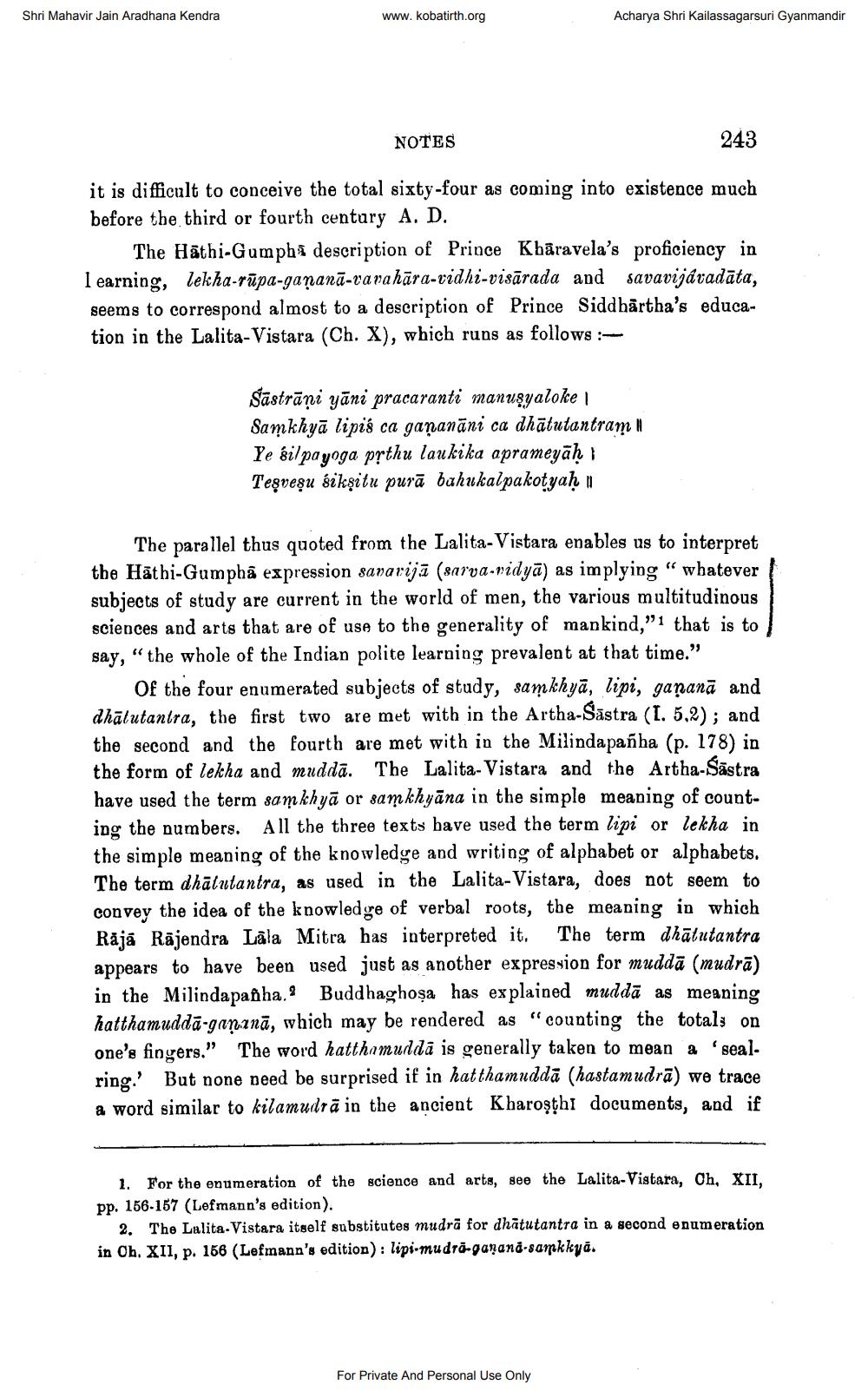________________
Shri Mahavir Jain Aradhana Kendra
www.kobatirth.org
Acharya Shri Kailassagarsuri Gyanmandir
NOTES
243 it is difficult to conceive the total sixty-four as coming into existence much before the third or fourth century A. D.
The Hāthi-Gumphi description of Prince Kbāravela's proficiency in I earning, lekha-Tüpa-gananā-ravahāra-ridhi-visārada and savavijávadāta, seems to correspond almost to a description of Prince Siddhartha's education in the Lalita-Vistara (Ch. X), which runs as follows :
Šāstrāņi yāni pracaranti manuşyaloke Sa khẽ lips ca gamam ăni ca dhātutantra | Ye silpayoga pythu laukika aprameyāḥ 1 Tegveşu śikṣitu purā bahukalpakotyaḥ 11
The parallel thus quoted from the Lalita-Vistara enables us to interpret the Hathi-Gumphâ expression savarijā (sarva-vidyā) as implying “whatever subjects of study are current in the world of men, the various multitudinous sciences and arts that are of use to the generality of mankind,”1 that is to say, " the whole of the Indian polite learning prevalent at that time."
Of the four enumerated subjects of study, samkhyā, lipi, gananā and dhālutantra, the first two are met with in the Artha-Šāstra (1. 5,2); and the second and the fourth are met with in the Milindapañha (p. 178) in the form of lekha and muddā. The Lalita-Vistara and the Artha-Šāstra have used the term samkhyā or samkhyāna in the simple meaning of counting the numbers. All the three texts bave used the term lipi or lekha in the simple meaning of the knowledge and writing of alphabet or alphabets. The term dhālutantra, as used in the Lalita-Vistara, does not seem to convey the idea of the knowledge of verbal roots, the meaning in which Rājá Rājendra Lāla Mitra has interpreted it. The term dhātutantra appears to have been used just as another expression for muddā (mudrā) in the Milindapanha. Buddhaghoşa has explained muddā as meaning hatthamudda-ganınā, which may be rendered as "counting the totals on one's fingers." The word hatthamuldā is generally taken to mean a seal. ring.' But none need be surprised if in hatthamuddā (hastamudrā) we trace a word similar to kilamudrā in the ancient Kharoşthi documents, and if
1. For the enumeration of the science and arts, see the Lalita-Vistara, Oh, XII, pp. 156-157 (Lefmann's edition).
2. The Lalita Vistara itself substitutes mudrā for dhātutantra in a second enumeration in Ch. XII, p. 166 (Lefmann's edition): lipi-mudra-ganana-samkkyā.
For Private And Personal Use Only




